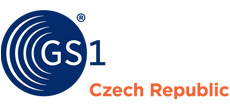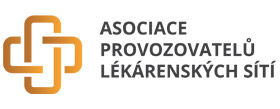Medicines verification status across the EU: The Czech Republic is not lagging behind
According to the Evaluation Report of the European Medicines Verification Organisation (EMVO) from 30 September 2020, which tracked the ratio of connected end users (pharmacies and distributors) and the frequency of error messages (so-called alerts) in relation to the transactions carried out, the Czech Republic is one of the countries to successfully implement of the FMD (the EU Falsified Medicine Directive). In the Czech Republic, 100% of end users are connected to the system and the ratio of alerts was 0.09% at the end of July.
2,697 pharmacies (100%) are now connected to the Czech National Medicines Verification System (CZMVS), of which 116 are hospital pharmacies (100%) and in addition 411 warehouses/distributors. The data for 8 157 medicinal products with a total number of packages of over 300 million were uploaded to the system. The ratio of alerts in 2020 has remained under 1.0%, despite the high number of transactions (approximately 8 million a week.)
Currently the Czech Medicines Verification Organisation (Národní organizace pro ověřování pravosti léčiv - NOOL) is expanding its alert management system, helping to resolve (find the cause) and close alerts, which in the vast majority of cases allows the medicine to be dispensed to the patient.
Alert analysis in the Czech Republic is carried out daily, with NOOL employees helping the end users to resolve alerts and mediate information to the marketing authorisation holder (MAH) if necessary. At the same time, they are cooperating with the end users’ IT platform providers, helping them to eliminate errors on the end-user side (bar code reader settings etc.).
From the EMVO overview, it can be seen, that most alerts in EU are created in pharmacies (78%), by marketing authorization holders (MAH, 13%), with distributors making up 5% of alerts, 1% by the error of the system and 3% by other causes. In the Czech Republic in July, most alerts were caused by data uploaded to the system by MAH, 21% of alerts created in pharmacies, 4% at distributors. This implies that Czech pharmacists were better able to manage the system than most of their European colleagues.
The status of FMD implementation has its traffic light colour code, similar to the European epidemiological situation: countries with a 100% connection rate and a ratio of alerts under 1% are in green.
The countries with one hundred percent connectivity and a ratio of alerts under 1.0% are: Austria (100 % connections, 0.09 % alerts), Croatia (100%; 0.05%), the Czech Republic (100%; 0.09%), Estonia (100%; 0.09%), Finland (100%; 0.08%), Latvia (100%; 0.06%), Slovenia (100%; 0.05%) and Sweden (100%; 0.1%) (according to EMVO monitoring reports). On the other hand, countries in red, meaning those with insufficient system connections, include Bulgaria (78% of end users), France (just 7%), Liechtenstein (19%), Lithuania (88%), Malta (84%) and the United Kingdom (65%). Even the Netherlands, which is often presented as a model for the Czech healthcare system, doesn’t have a perfect FMD implementation: 98% of pharmacies are connected and the ratio of alerts is 2.18%, of which 89% are generated by pharmacies. Countries with over one percent of alerts are Poland (1.96%), Portugal (2.93%), and Spain (1.65%) as well.
In conclusion we must point out that only very few countries meet the target level of 0.05% alerts generated from executed transactions. It is commendable that Czech pharmacists have so actively and responsibly participated in the verification of medicines.

 Registration and login to systems
Registration and login to systems












